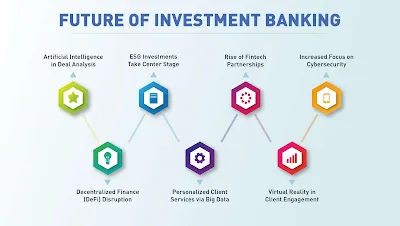Featured Post
- Get link
- X
- Other Apps
The Rise of DeFi: How Decentralized Finance is Disrupting the Traditional Financial System
Did you know that DeFi platforms process over $100 billion in transactions annually?
Meanwhile, traditional banks still control the majority of the world’s financial system - but for how long?
The rise of Decentralized Finance (DeFi) is revolutionizing the way we think about banking. By eliminating middlemen and relying on blockchain technology, DeFi offers faster transactions, lower fees, and greater financial inclusivity. But what does this mean for traditional banks? Are they doomed, or can they adapt?
In this blog, we’ll break down what DeFi is, how it’s challenging banks, key trends shaping the industry, and how you can benefit from it.
Understanding Decentralized Finance (DeFi)
What is DeFi?
Decentralized Finance (DeFi) refers to a financial ecosystem built on blockchain technology that eliminates the need for intermediaries like banks, brokers, and payment processors. It allows users to lend, borrow, trade, and earn interest directly - without a bank.How DeFi Works (In Simple Terms)
Think of a bank as a middleman that holds and manages your money. When you deposit money, the bank lends it out and earns interest - giving you only a small fraction.
Now, imagine removing the bank entirely. DeFi platforms let users lend money directly to others through smart contracts (self-executing programs on the blockchain). This means you earn higher interest rates, and transactions are cheaper, faster, and more transparent.
Key Components of DeFi
- Smart Contracts - Automated agreements that execute without intermediaries.
- Decentralized Exchanges (DEXs) - Platforms like Uniswap allow users to trade assets without a centralized authority.
- Lending Protocols - Apps like Aave and Compound let users lend/borrow crypto without banks.
The Impact of DeFi on Traditional Banks
Why Banks Are Feeling the Pressure
Traditional banks operate on centralized systems, meaning they control your funds, impose fees, and process transactions based on their rules. DeFi, on the other hand, is:
✅ More Accessible - Anyone with internet access can use DeFi.
✅ Faster & Cheaper - No middlemen = lower fees and instant transactions.
✅ More Transparent - Transactions are recorded on the blockchain for everyone to see.
Real-World Impact
- Loans & Credit: Instead of waiting for bank approvals, users can get instant loans via DeFi platforms like MakerDAO.
- Cross-Border Payments: Traditional banks charge high fees for international transfers, while DeFi transfers are nearly free and instant.
- Financial Inclusion: Millions of unbanked individuals can now access financial services without needing a bank account.
Key Trends & Innovations in DeFi
1. The Rise of Stablecoins
Stablecoins like USDC and DAI bridge the gap between crypto and traditional finance by maintaining a stable value, making them ideal for payments and savings.
2. DeFi 2.0 & Yield Farming
Yield farming allows users to earn passive income by providing liquidity to DeFi platforms. New projects are enhancing security and returns, making it even more attractive.
3. Institutional Adoption
Banks like JPMorgan and Goldman Sachs are exploring DeFi technologies, proving that the financial world is taking DeFi seriously.
How Uniswap Disrupted Traditional Exchanges
Uniswap, a decentralized exchange (DEX), completely changed how crypto trading works. Unlike traditional exchanges like Binance or Coinbase, Uniswap:
- Removes middlemen by using smart contracts.
- Lets anyone list a token without approval.
- Has lower fees than centralized exchanges.
Result? Billions of dollars flow through Uniswap daily, showing that DeFi can outperform traditional banking services.
How You Can Benefit from DeFi
If you’re new to DeFi, here’s how to get started:
1. Earn Interest with DeFi Lending
Instead of keeping your money in a bank savings account earning 0.5% APY, you can deposit stablecoins into platforms like Aave and earn 5-10% APY.
2. Trade on Decentralized Exchanges (DEXs)
Avoid high fees from centralized exchanges by using DEXs like Uniswap or SushiSwap to trade crypto instantly.
3. Invest in DeFi Tokens
Tokens like UNI, AAVE, and COMP give investors exposure to DeFi’s growth while offering governance rights over protocols.
Challenges and Future Outlook of DeFi
Challenges Facing DeFi
🚨 Regulatory Uncertainty - Governments are still figuring out how to regulate DeFi.
🔒 Security Risks - Smart contracts can be hacked if not properly audited.
💰 Volatility - Crypto prices can be unpredictable, affecting DeFi investments.
What’s Next?
Experts predict that DeFi will continue to evolve, with increased regulatory clarity, better security, and institutional adoption making it a mainstream financial alternative.
Conclusion: Is DeFi the Future of Finance?
🔹 DeFi is reshaping the financial industry by offering faster, cheaper, and more accessible financial services than traditional banks.
🔹 While challenges remain, the growth of stablecoins, DeFi lending, and institutional adoption indicate that DeFi is here to stay.
🔹 Whether you’re an investor, trader, or everyday user, exploring DeFi can help you gain financial independence.
📢 Ready to Dive Into DeFi?
If you found this guide helpful, check out our related posts:
📌 How to Start Investing as a Beginner in 2025
📌 Cryptocurrency vs. Stocks: Which Investment is Right for You?
📌 How 5G is Changing the Internet and Connectivity
✅ If you found this insightful, please share & follow!
- Get link
- X
- Other Apps
Popular Posts
ChatGPT’s Studio Ghibli-Style AI Art Is Going Viral - Here’s How You Can Create Your Own!
- Get link
- X
- Other Apps
How to Start Investing as a Beginner in 2025: A Step-by-Step Guide
- Get link
- X
- Other Apps









Comments
Post a Comment